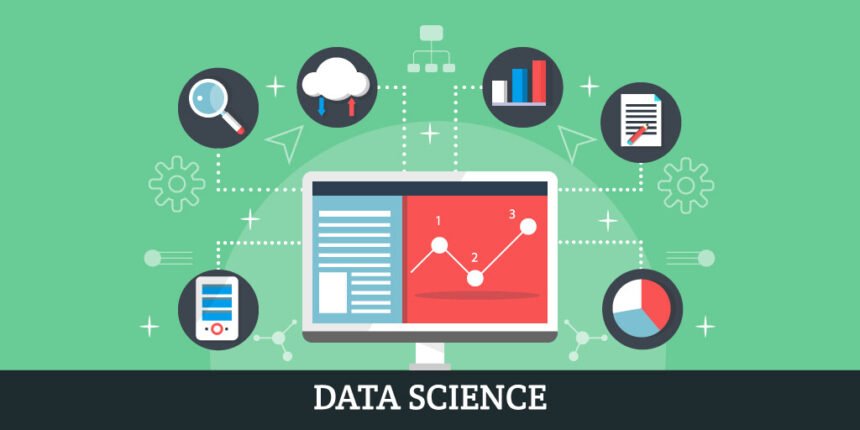Technological change happens fast and usually just as we have gotten used to one working method, another one is just around the corner getting ready to take over. In this case, we’re talking about the shift from business intelligence to data science and how it has affected the retail industry.
Business intelligence is still a mighty advantage for any retail business to have when seeking to grow, stabilize and remove risks. It is also becoming cheaper to develop with more affordable technology becoming accessible and more people available with the skills to handle it. However, in comparison to data science, its benefits are limited. While business intelligence is useful at showing you what you are already aware of, such as where profits were lost and what risks need to be reduced, data science can flag up ‘invisible’ problems you had no idea about and provide strategies for growth that were hiding in plain sight. Data science companies allow retail businesses to look forward and predict future trends, while business intelligence consultants can only analyze data of past events.
This is incredibly important for those who work in retail, an industry that changes shape very frequently, and where customer satisfaction is highly regarded.
Comparing the shift between the two is a bit like comparing the shift between VHS and DVD roughly 20 years ago. The latter succeeded the former, and we may possibly see the same thing again in the next few years with future methods of data analysis.
Here are four examples of the shift from business intelligence to data science in retail:
Find Your Perfect Customer – Timberland
Timberland is one of the finest examples of a company breathing new life into itself with the help of data science. A few years ago, Timberland, a now very well-known retailer of outdoor clothing and footwear, was on death’s door until it was acquired by the VF Corporation. From that point onwards, Timberland became a dramatically more data-driven company.
It moved away from business intelligence approaches and started to actively seek a new target customer with the help of data science – looking forward towards new data and not backwards at past mistakes. It did this by conducting a large-scale customer study in eight countries over the course of two years. Timberland found that its ideal customer was ‘urban residents with a casual interest in outdoor activities’ and with a new and clear direction to follow, managed to increase its profits significantly, not only saving it from collapse but transforming it into a trendsetting retailer.
Sell Lower Demand Products Better – Amazon
Moving into data science also allows retailers to build more sophisticated and personalized recommendation systems. Amazon mastered this years ago and it is an integral part of how it stays competitive. Many people are aware of how Amazon’s algorithms work by providing suggestions based on previous purchases and searches. In fact, up to 35% of Amazon’s sales are believed to be related to this. However, Amazon’s recommendation system is also capable of promoting what is known as ‘long tail items’, items that do not sell too well and do not drive much revenue. By promoting these lesser-known products by tying them into recommendations, Amazon is able to actively target customers with them, boost its sales and move stock.
Ensure Products Are Where They Need to Be – Kohl’s
Speaking of moving stock, Kohl’s is another retailer that plans to use data science to help it allocate stock to the right stores better. To do this Kohl’s will not only takes into consideration factors such as transactions and browsing in their stores and online, but also examines other data such as the weather, macroeconomic conditions, and social data at each store location. This way the busiest stores will always have enough stock and quieter stores will never be overstocked, supplying demand where it is needed efficiently.
Kohl’s and other top retailers have discovered that big data can increase their sales by 100-200%. They are increasing their investments in big data solutions to leverage it across the supply chain. They are coordinating with transnational software development companies that have a solid grasp of their own retail industry to develop solutions in marketing, logistics and HR.
Manipulate Prices When You Need To – Walmart
Being competitive in retail often means raising or lowering prices depending on what rival companies are also offering. Walmart is one retailer that spends tons of money on monitoring not just its own transactions, but also the price changes of its competitors while taking into consideration its own stock levels. With the aid of data science, Walmart is able to implement real-time changes to its pricing and never lose its edge over other retailers. In the past, to price products this fiercely took a lot more time and couldn’t be monitored so conveniently or, most importantly, predicted.
This also has a second advantage, which is the possibility of moving away from the traditional end of sales technique of significantly lowering prices once demand has almost vanished at the end of a season, to instead drop prices more gradually, which has been shown to be more effective.
Business intelligence is still an incredibly useful thing to have, with 62% of retailers reporting that using data is creating a competitive advantage, according to IBM. That said, companies that take advantage of data science will always have the upper hand in terms of growth, security and stability. Quite simply this is because data science has a more forward-looking approach that can help retailers remodel themselves faster when changes start to take place. Whether that’s changes in the market, supply or consumer trends.
If retailers can’t afford to invest in data science, there is no shame in using business intelligence technology instead. On top of that, data scientists are in high demand and it can be pretty difficult to hire them – though this is likely to change as more and more people obtain the skills to fill those positions. However, retailers should keep in mind that business intelligence is slowly on the way out and data science is very much here now and has already taken many companies by storm.









